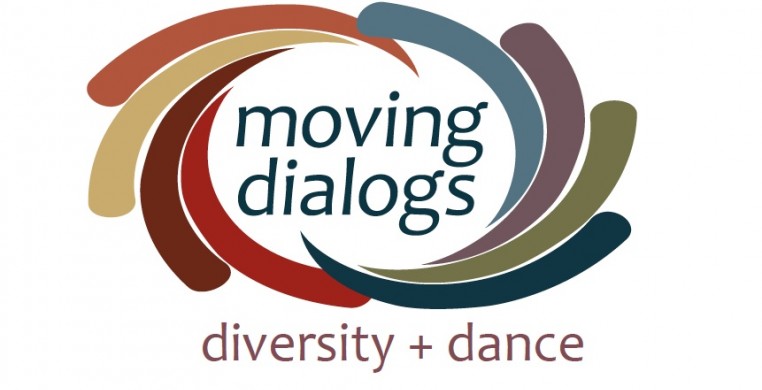“I implied in my initial reflection that dance deserves a robust pat on the back–the art form’s contributions to diversity over the decades have been among the most progressive, subtle and uncompromising of any field of endeavor.
Monday’s round-table discussion, from my observation, served to reinforce that with ample vigor and poignancy. There’s no finer illustration than one anecdote from Alana Wallace, founder of the physically integrated troupe Dance Detour. She pointed to one of her dancers and noted that when she first met her, she was pregnant–”her kid was in her belly,” Wallace, who moves via a wheelchair, put it with her customary frankness. “Now, that kid, whenever she sees someone in a wheelchair, exclaims, ‘There’s a dancer.’” Wallace’s inarguable conclusion: “We all deserve the right to express ourselves.”
Monday’s event, held in a studio at the Hubbard Street Dance Center, consisted of about 40 participants sitting in chairs in a large circle. Wallace and members of her troupe were there, as were Liz Lerman, founder of the remarkable, inter-generational Dance Exchange, visiting from Baltimore; Sherry Zunker, veteran Chicago choreographer and founder of BeMoved Dance, the inclusive dance fitness program; Annie Rudnik, leader of Agree Performance; Youth and Family Programs Manager Kristen Gurbach Jacobson, who spoke about Hubbard’s Parkinson’s Project; and Shirley Mordine, the pioneering Chicago choreographer, who, along with curator Baraka de Soleil, helped inspire the Moving Dialogs series thanks to what she and others perceived as a lack of discussion of the topic at a national dance confab that boasted the issue as its theme.
Wallace’s point was brought home with two critical images of the evening. One, suggested by Lerman, was that of an invisible string created by holding one’s hands about a foot or two apart, one on top of the other, fingers joined. Lerman demonstrated the image and then suggested a major theme of the discourse be the action involved in moving that string and those hands from a vertical to a horizontal position–an imagistic paradigm suggesting the democratization of ideas about hierarchy, quality, and participation. The more successful we are at leveling the playing field, at expanding our consciousness in the process, the more rich and meaningful our effort at diversity becomes. Zunker honed in on that in describing the workings of BeMoved, which is designed to bring out the dancer in anyone, regardless of physical abilities or problems. At BeMoved’s classes, people of all abilities are welcome, but, in this lunge for inclusiveness, something surprised Zunker. “I wasn’t expecting for some of these people to get to be really good dancers,” she said. Her program has convinced her: “If everybody danced, the world would be a better place.”
The other image, or more accurately collection of images, came from the program’s dance moments. One of Rudnik’s performers, Larry McInnes, opened the session by taking to the center of the circle and running the participants through warm-up exercises, stretching their hands above the heads while invited to make and/or shout any noise or sound effects they wanted–discipline mixed with primal freedom, a kind of metaphor for the wide-ranging discussion of the night, and coincidentally, with its vertical rush, a foreshadowing of the visual theme demonstrated by Lerman. And Detour personnel Ladonna Freidheim and Melissa Sallée performed a brief duet, Freidheim in a wheelchair, Sallée explaining beforehand how she has to take care, including working from a chart outlining Freidheim’s body, not to touch certain areas of her partner’s limbs because they’re affected by her condition. One shoulder is up for action, the other off-limits, for instance.This seemed to encapsulate the whole notion of the complexity and even paradox of a discipline inspired by bodily perfection evolving into an art with multi-dimensional, humanistic vision and inclusiveness. As they performed, Sallée eventually wound up posed delicately on the wheelchair’s foot rests, enacting a classic image of arabesque, driving home a beautiful point. Ballet and dance are always about pinpoint connections, letter-perfect timing, precise positions and foot locations.Why shouldn’t such compulsive exactness apply to Freidheim’s sensitive spots, too? No reason, the performance–and discussion–made clear. No reason at all.
–Sid Smith, noted critic/writer and editor for SeeChicagoDance.com,
Present at this Moving Dialog? care to share your thoughts or responses to the discussion?
Respond below…
This summer, Moving Dialogs: Diversity+Dance conversations are looking to be continued in more informal and intimate settings. In the fall, this engaged discussion series continues with three distinctive and immersive events throughout Chicago. Images and further reflections from participants of May 6th’s To MOVE discussion as well as previous Moving Dialogs will be added soon…
![]()
